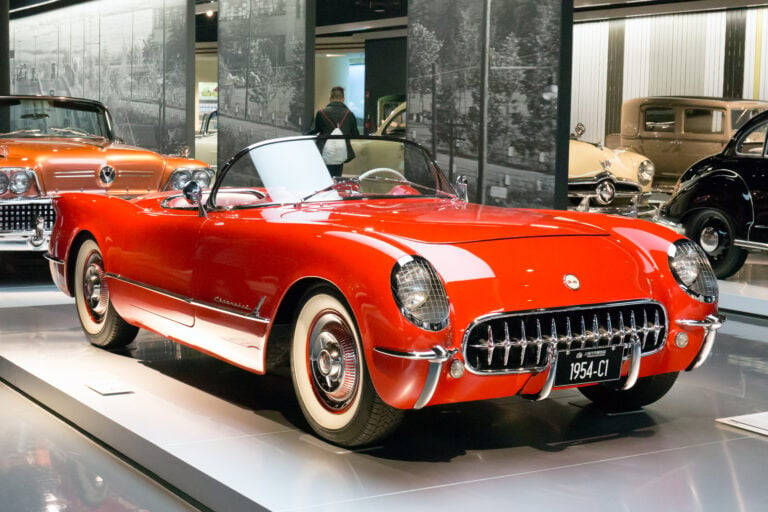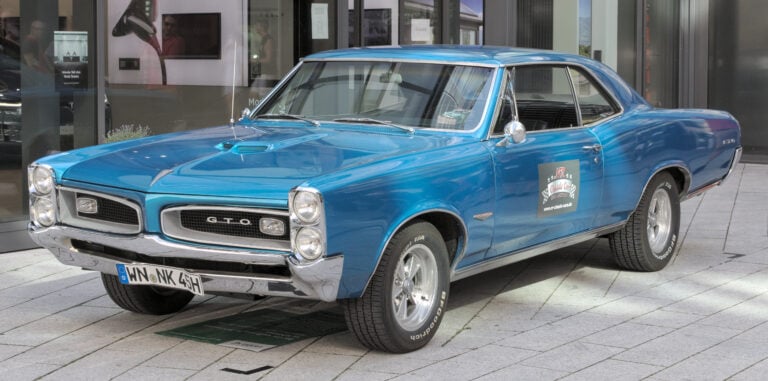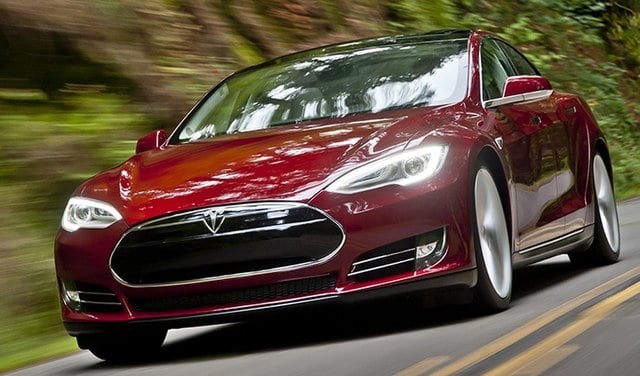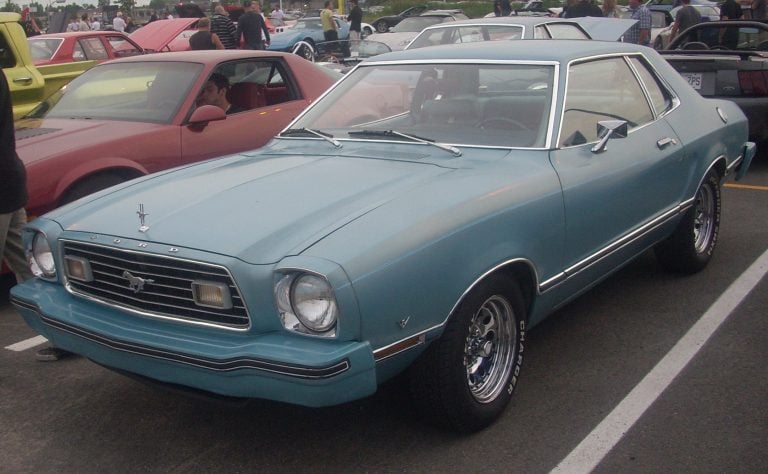The 30 Worst SUVs Ever Made: A Comprehensive Guide to Automotive Failures
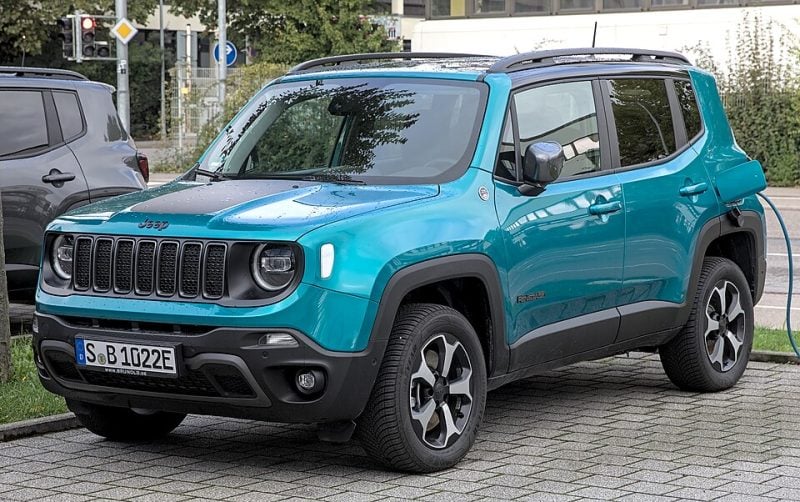
SUVs have become a dominant force in the automotive market, offering drivers the promise of versatility, safety, and reliability.
These vehicles are designed to handle everything from daily commutes to off-road adventures while providing ample space for families and cargo. However, not all SUVs have lived up to these expectations.
Some models have become notorious for their design flaws, reliability issues, and overall poor performance, earning them a place among the automotive industry’s biggest disappointments.
From mechanical failures to safety concerns, these problematic SUVs have left owners frustrated and mechanics busy. This examination covers thirty of the most problematic SUVs ever produced, ranging from well-known disasters to luxury models that failed to deliver on their premium promises.
Here are the 30 worst SUVs ever made:
1. 2001 Pontiac Aztek

The 2001 Pontiac Aztek stands as one of the most criticized SUVs in automotive history. Its unconventional design featured multiple angular elements that created a polarizing appearance.
Pontiac marketed the Aztek with “Xtreme” futuristic styling aimed at young, active buyers. The design departed completely from industry conventions at the time.
The vehicle suffered from 392 reported problems and defects from owners. Engine, interior accessories, and electrical systems were the most problematic areas.
Despite its reputation, the Aztek included innovative features like a built-in cooler and removable rear seats. It was designed as an all-in-one adventure vehicle for outdoor activities.
The Aztek’s poor reception contributed to its discontinuation after just five years of production. It became a symbol of design failure in the SUV market.
2. Ford Excursion
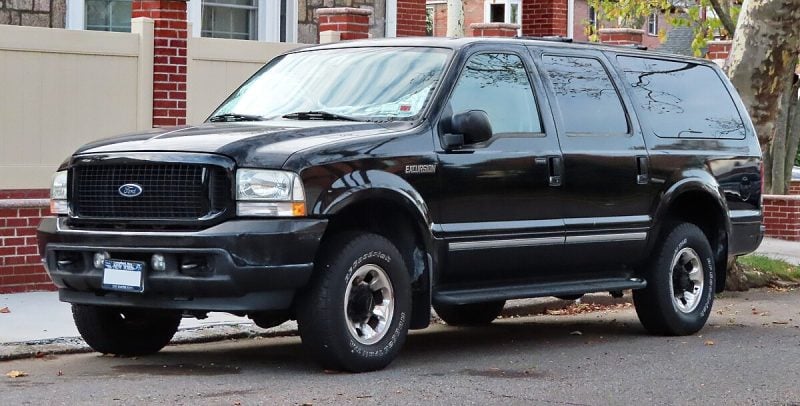
The Ford Excursion dominated roads from 1999 to 2005 as one of the largest SUVs ever produced. Built on the Super Duty truck platform, it offered massive interior space and towing capacity.
However, its colossal dimensions created significant practical problems. The Excursion proved nearly impossible to park in standard spaces and difficult to maneuver in urban environments.
Fuel economy was abysmal, with many owners reporting single-digit miles per gallon in city driving. The vehicle’s excessive size made it impractical for most families’ daily needs.
Critics labeled it “excess for the sake of excess.” Unless owners needed seating for eight passengers regularly, the Excursion’s drawbacks far outweighed its benefits.
The massive SUV eventually disappeared from Ford’s lineup due to poor sales and changing consumer preferences toward more efficient vehicles.
3. Jeep Renegade
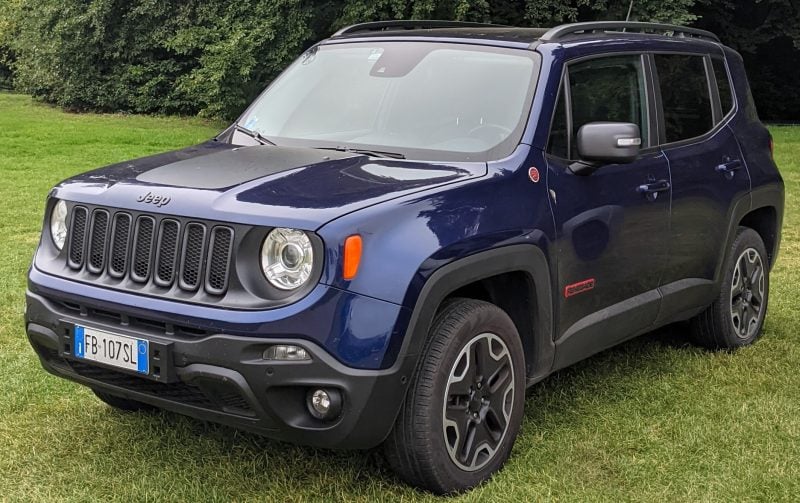
The Jeep Renegade stands as one of the most problematic compact SUVs in recent years. The first-generation model from 2015-2021 generated over 500 owner complaints during its production run.
This subcompact crossover fails to deliver on multiple fronts. The interior feels cramped and uncomfortable for passengers. Engine performance remains uninspiring and sluggish compared to competitors.
Reliability issues plague many model years. Owners report frequent mechanical problems that require costly repairs. The vehicle’s track record shows consistent quality control failures.
Despite its rugged Jeep styling, the Renegade lacks the capability buyers expect. It carries a premium price tag without delivering premium performance or reliability.
The combination of poor interior space, weak engines, and ongoing reliability concerns makes the Renegade a disappointing entry in Jeep’s lineup.
4. GMC Acadia
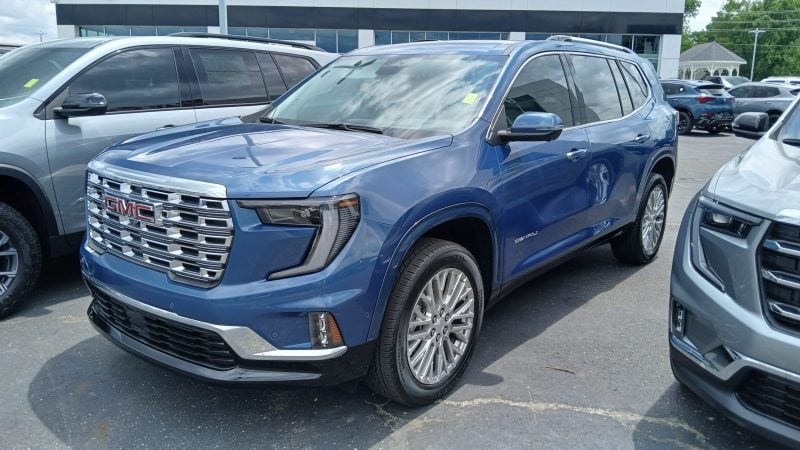
The GMC Acadia has earned its place among problematic SUVs due to recurring issues across multiple model years. This midsize crossover launched in 2007 with promising family-friendly features but quickly developed a reputation for reliability concerns.
Transmission problems plague many Acadia models, causing costly repairs for owners. The vehicle’s airbag system has also presented safety concerns in certain years, creating potential hazards for passengers.
The 2008-2012 model years are particularly notorious for mechanical failures. These early generations experienced widespread issues that affected both performance and safety ratings.
Engine problems compound the Acadia’s troubles, with some owners reporting premature failures requiring expensive replacements. These issues occur across different generations, making it difficult to find reliable used models.
Despite attempts at improvements in later years, the Acadia’s track record of problems has damaged its reputation in the competitive midsize SUV market.
5. Fiat 500X
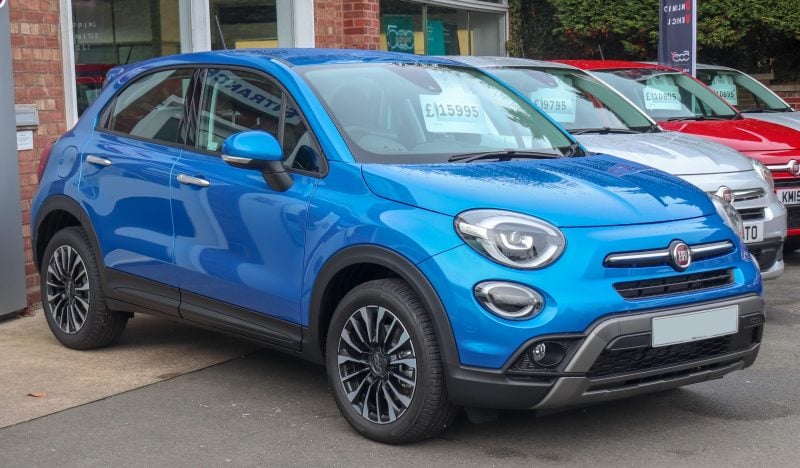
The Fiat 500X promised Italian styling in a compact SUV package but failed to deliver on performance and reliability. This subcompact crossover suffers from significant mechanical problems that plague multiple model years.
Consumer Reports gave the 2015 model year a dismal 1.0 out of 5.0 reliability rating. J.D. Power rankings consistently place the 500X below average compared to competitors.
Engine and transmission issues dominate owner complaints. The gearbox creates a particularly frustrating driving experience, making longer trips uncomfortable for passengers and drivers alike.
Interior space falls short of expectations for a crossover SUV. The cramped cabin limits passenger comfort and cargo capacity compared to other vehicles in its class.
Despite attractive exterior design, the 500X cannot overcome its fundamental reliability problems and poor build quality that make it unsuitable for most buyers.
6. Ford Explorer
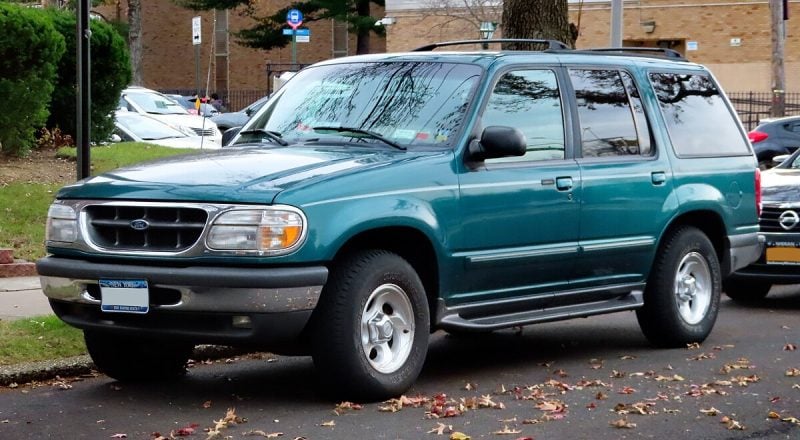
The Ford Explorer earned its place among problematic SUVs through decades of reliability issues. Since its 1991 debut, this midsize SUV has accumulated one of the largest complaint databases in automotive history.
Early 2000s models suffered from a major rollover scandal. Poor suspension design combined with defective Firestone tires created dangerous highway conditions.
The Explorer’s worst model years include 2020, 2013-2017, 2011, 2006, 2002-2004, and 1996-2000. These iterations experienced chronic mechanical problems and safety concerns.
Consumer surveys consistently rank the Explorer among the most unreliable SUVs available. Its 30-year production run has generated extensive recall data and customer complaints.
Manufacturing inconsistencies plague different model years. While some iterations perform adequately, the problematic years significantly damage the Explorer’s overall reputation in the SUV market.
7. Chevrolet Captiva
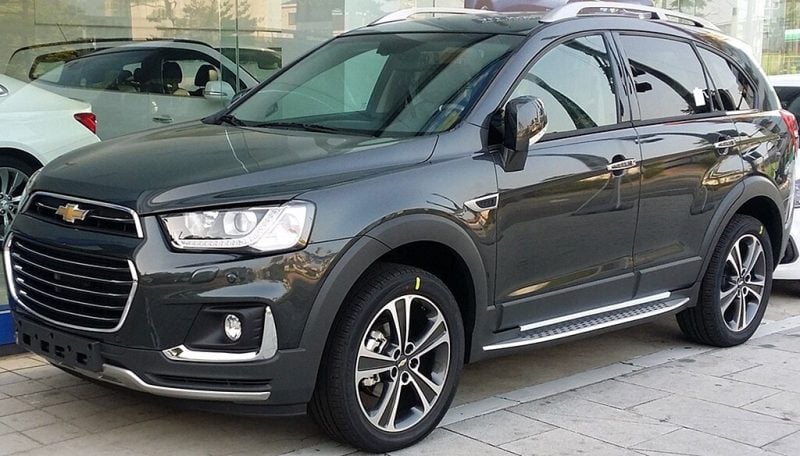
The Chevrolet Captiva entered the North American market as a compact crossover SUV from 2008 to 2015. Despite its practical design and affordable price point, the vehicle developed a reputation for reliability issues.
Transmission problems plagued multiple model years of the Captiva. These issues often resulted in costly repairs and frustrated owners who expected better performance from their family vehicle.
The Captiva’s global production under various names led to inconsistent quality control. Different markets received vehicles with varying levels of reliability, creating confusion among consumers researching the model.
Engine problems also affected certain model years. These mechanical failures typically occurred at relatively low mileage, making them particularly disappointing for owners.
The combination of transmission troubles and engine issues contributed to the Captiva’s poor reliability ratings. Many automotive experts now recommend avoiding this model in favor of more dependable alternatives from brands like Toyota or Honda.
8. Dodge Nitro
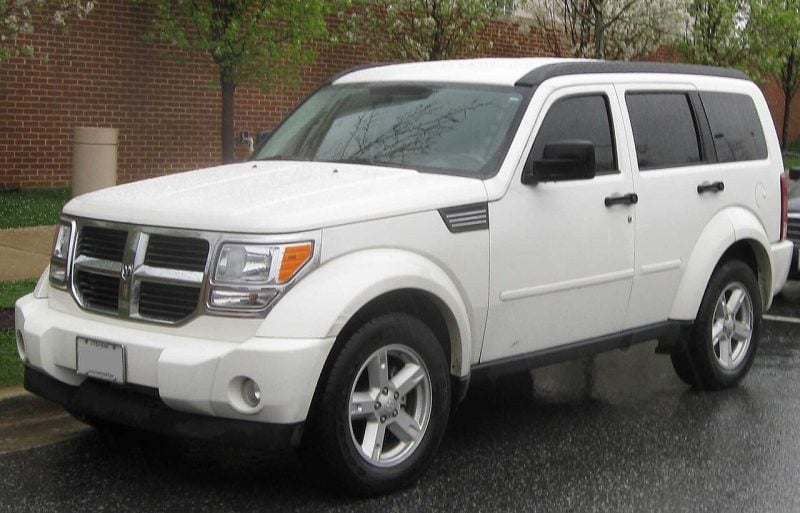
The Dodge Nitro debuted in 2007 with poor timing, arriving just before the auto industry collapse. This compact SUV suffered from multiple design flaws that made it unpopular with consumers.
The Nitro’s boxy exterior housed a cramped interior that failed to provide adequate passenger space. Poor ergonomics and awkward cabin layout created an uncomfortable driving experience.
Performance issues plagued the vehicle throughout its production run. The weak engine delivered insufficient power for most driving situations, while terrible handling made it difficult to maneuver.
Fuel efficiency proved disastrous, with some variants achieving only 6 mpg. This made it one of the least fuel-efficient SUVs available during rising gas prices.
Reliability problems affected multiple model years, creating additional ownership concerns. The combination of poor build quality and mechanical issues contributed to frequent repairs.
Dodge discontinued the Nitro in 2011 after just four years of production, marking it as a clear market failure.
9. Mitsubishi Outlander Sport
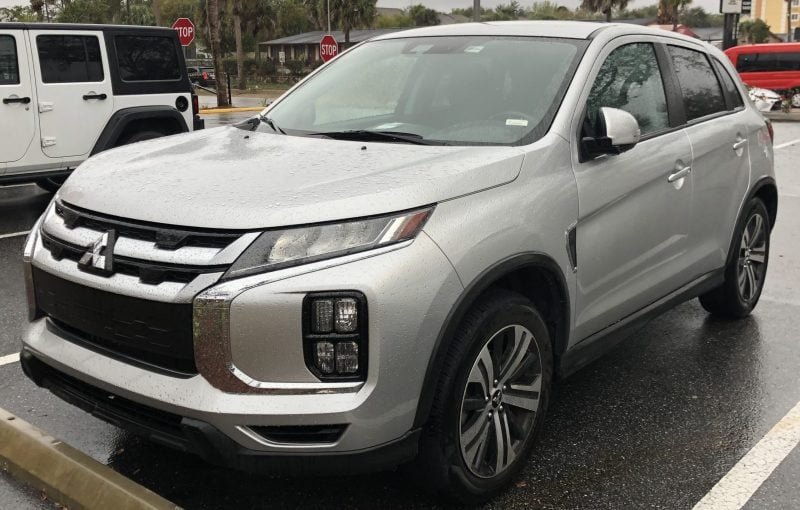
The Mitsubishi Outlander Sport consistently ranks among the worst subcompact SUVs in reliability studies. Consumer Reports placed it 19th out of 21 SUVs in its segment.
Owners frequently report electrical system failures. Dead batteries and starting problems plague many models. The stereo system often experiences shorts and malfunctions.
Build quality remains average at best. When components break, repairs typically involve expensive parts and labor costs.
The CVT transmission has shown reliability concerns in certain model years. Some drivers experience premature wear and costly replacements.
Interior materials feel cheap compared to competitors in the same price range. Road noise intrusion is more noticeable than in rival vehicles.
The infotainment system lacks modern features found in competing models. Response times are slow and the interface feels outdated.
10. Nissan Juke
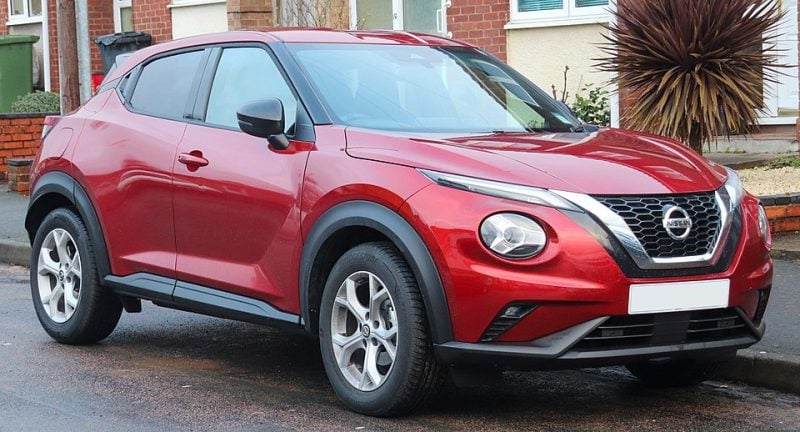
The Nissan Juke earned its place among problematic SUVs through a combination of polarizing design and practical shortcomings. Its bug-eyed headlight design alienated many potential buyers from the start.
The subcompact SUV suffered from a cramped backseat that made it impractical for families. Interior materials felt cheap and looked it, undermining the overall ownership experience.
Despite offering a turbocharged engine option, the Juke delivered a harsh ride quality that disappointed drivers. The vehicle’s unusual proportions and styling choices created a divisive appearance that limited its market appeal.
Production ended in North America in 2017, reflecting its struggles to find a sustainable customer base. The Juke’s blend of design quirks and comfort issues made it a questionable choice for most SUV buyers.
11. Hyundai Veracruz
The Hyundai Veracruz operated from 2007 to 2012 as Hyundai’s attempt at a midsize luxury SUV. Its short production run signals the challenges this model faced in the competitive SUV market.
The Veracruz ranks 15th in reliability among 30 Hyundai models. Owners filed 67 complaints across its six model years, with interior issues being the primary concern.
Early model years suffered from significant reliability problems that damaged the vehicle’s reputation. The 2007 and 2008 models experienced the most issues, making them particularly problematic for buyers.
Despite offering a spacious interior and V6 engine, the Veracruz failed to establish itself against competitors like the Honda Pilot and Toyota Highlander. Its reliability concerns and limited market presence contributed to its discontinuation after just six years.
The vehicle’s struggles in both reliability and market acceptance demonstrate why it earned a spot among problematic SUVs.
12. Land Rover Freelander 2
The Land Rover Freelander 2 represented an attempt to refine the original’s troubled formula. Despite moving to a more modern unibody platform, reliability remained a persistent weakness.
The model suffered from frequent electrical malfunctions that left owners stranded. Power window failures and faulty door locks became common complaints among buyers.
Engine problems plagued multiple variants of the Freelander 2. The 2.2-liter diesel engine experienced turbocharger failures and fuel injector issues that required expensive repairs.
Transmission concerns added to ownership costs. The six-speed automatic transmission developed shifting problems and required premature replacements in many cases.
Interior build quality fell short of expectations for a premium brand. Cheap plastic trim pieces broke easily, and electronic components failed regularly.
The vehicle’s off-road capabilities, while marketed as a key selling point, proved limited compared to traditional Land Rover models. Urban buyers found better alternatives in more reliable compact SUVs from competing manufacturers.
13. Toyota FJ Cruiser
The Toyota FJ Cruiser appeared promising when it launched in 2006. This retro-styled SUV borrowed design cues from the legendary FJ40 Land Cruiser.
Despite its rugged appearance, several model years suffered from significant problems. The 2007 model stands out as particularly troublesome, with nearly 30% of owners reporting transmission issues.
The 2008 and 2013 models also experienced mechanical difficulties that frustrated owners. These problems included transmission failures and other costly repairs that undermined the vehicle’s reliability reputation.
Poor visibility became another major complaint. The thick rear pillars and small rear windows created dangerous blind spots for drivers.
The interior design felt cramped and impractical for daily use. Rear passenger access proved challenging due to the rear-hinged doors and limited space.
Production ended in 2014 after just eight years in the market, reflecting disappointing sales and persistent quality concerns.
14. Jeep Liberty
The Jeep Liberty earned a reputation as one of Jeep’s most problematic models during its 2002-2012 production run. This compact SUV was designed to meet growing demand for family-friendly vehicles with off-road capability.
The Liberty suffered from numerous reliability issues throughout its lifespan. Owners frequently reported transmission problems, electrical failures, and engine difficulties that led to expensive repairs.
Despite offering room for five passengers and decent off-road capabilities, the Liberty’s reliability problems overshadowed its positive attributes. The vehicle’s reputation for frequent breakdowns made it unpopular among critics and consumers alike.
The Liberty represented Jeep’s attempt to move beyond its traditional off-road niche into the mainstream SUV market. However, persistent mechanical issues prevented it from achieving success in this competitive segment.
15. Hummer H3
The Hummer H3 ranked among the worst off-roading SUVs despite being marketed for rugged terrain use. This smaller Hummer model was produced from 2005 to 2010 as General Motors’ attempt at a more fuel-efficient alternative.
The H3 suffered from poor fuel economy, achieving only 14 MPG city and 18 MPG highway with its five-cylinder engine. The V8 version performed worse at 13 MPG city and 16 MPG highway.
Reliability issues plagued the H3 throughout its production run. The vehicle accumulated 161 official complaints, with certain model years experiencing more problems than others.
The H3’s off-road capabilities failed to meet expectations for a vehicle bearing the Hummer name. Its performance disappointed buyers who expected military-grade durability and capability from the brand’s reputation.
16. Suzuki XL7
The Suzuki XL7 ran from 2001 to 2009 but failed to make a lasting impression in the competitive midsize SUV market. Despite being larger and more spacious when redesigned in 2007, the vehicle struggled with poor sales.
The XL7’s strange design choices alienated potential buyers. It lacked compelling features that competitors offered during the same period.
Reliability issues plagued the model throughout its production run. Owners frequently reported problems with the engine, transmission, and electrical systems.
The vehicle accumulated 81 complaints across its eight-year production span. Multiple model years showed concerning patterns of mechanical failures and component issues.
Suzuki discontinued the XL7 after just a few years of the redesigned model. The combination of underwhelming design, reliability problems, and weak market appeal made it one of Suzuki’s least successful SUV attempts.
17. Volkswagen Tiguan (first generation)
The first-generation Volkswagen Tiguan debuted in 2007 and arrived in the United States as a 2009 model. Built on the PQ46 platform, this compact SUV promised German engineering and upscale design.
The early years from 2009 to 2013 proved particularly problematic for owners. Timing chain tensioner failures became a recurring nightmare, leading to expensive engine repairs.
Electrical problems plagued these models consistently. Clock spring failures disabled airbags, horns, and steering wheel controls despite recalls that failed to properly address the issue.
Ignition coil problems added to the reliability concerns. These failures often left drivers stranded and required frequent replacements.
The 2009-2011 model years represent the worst of the first generation. Multiple owners reported transmission issues alongside the engine problems.
While the Tiguan offered decent cabin space and road manners, its reliability record made it a costly ownership experience for many buyers.
18. Chevrolet Tahoe (early 2000s models)
The early 2000s Chevrolet Tahoe models suffered from significant reliability issues that earned them a spot among problematic SUVs. The 2004 and 2005 model years were particularly troublesome.
These second-generation Tahoes experienced frequent transmission problems. The 4L60E automatic transmission often failed prematurely, requiring expensive repairs or complete replacement.
Electrical issues plagued many owners during this period. Dashboard warning lights would illuminate randomly, and various electronic components would malfunction without clear cause.
The fuel pump assemblies in these models were prone to failure. This created potential safety hazards as vehicles could suddenly lose power while driving.
Build quality inconsistencies were common across the production line. Interior trim pieces would break or come loose, and paint quality was below Chevrolet’s typical standards for the era.
19. Dodge Journey
The Dodge Journey earned its place among the worst SUVs through a combination of reliability issues and subpar performance. This mid-size crossover was manufactured from 2009 to 2020 but failed to impress critics and consumers.
The Journey received only two out of five stars for reliability ratings. Its poor fuel economy and lackluster performance disappointed drivers who expected more from their family vehicle.
J.D. Power gave later Journey models only “fair” ratings rather than “good” scores. The SUV struggled with mechanical problems throughout its production run, particularly in early model years.
Despite offering seven-passenger seating at an affordable price point, the Journey’s attractive pricing couldn’t compensate for its fundamental flaws. The vehicle’s reputation suffered due to ongoing quality concerns and an overall poor driving experience that left many owners frustrated.
20. Ford EcoSport (early models)
The Ford EcoSport’s initial launch in the United States proved problematic for Ford’s subcompact SUV ambitions. The 2018 and 2019 model years represented the vehicle’s worst iterations.
These early models suffered from numerous performance deficiencies that left buyers frustrated. Engine issues plagued many units, with reports of poor acceleration and rough idling becoming common complaints.
Build quality concerns extended beyond the powertrain. Interior materials felt cheap and poorly assembled compared to competitors in the subcompact SUV segment.
The transmission system also drew criticism from owners and automotive reviewers. Many experienced jerky shifting patterns and delayed response during acceleration.
Reliability statistics for these early years ranked significantly below industry standards. The 2018 and 2019 EcoSport models consistently appeared on lists of vehicles to avoid when shopping for used SUVs.
Ford addressed many of these issues in subsequent model years, making the later versions more dependable options for consumers.
21. Jeep Patriot
The Jeep Patriot ranks among the most problematic compact SUVs ever produced. This vehicle suffered from widespread reliability issues throughout its production run from 2007 to 2017.
Transmission problems plagued multiple model years. The continuously variable transmission (CVT) experienced frequent failures, leaving owners with expensive repair bills.
The 2015 model year stands out as particularly troublesome. This year accumulated numerous complaints related to transmission malfunctions and electrical issues.
Build quality fell short of expectations despite the Patriot’s appealing exterior appearance. Interior materials felt cheap and components broke easily under normal use.
The 2009 model year also ranks among the worst iterations. Owners reported similar transmission-related concerns that made the vehicle unreliable for daily driving.
Many automotive experts classify the Patriot as a vehicle to avoid when shopping for used SUVs.
22. Isuzu Ascender
The Isuzu Ascender served as a mid-size SUV produced from 2003 to 2008. General Motors built this vehicle for Isuzu as part of their GMT360 platform sharing agreement.
This SUV replaced multiple Isuzu models including the Trooper, Rodeo, and Axiom. The seven-passenger version launched in 2003, followed by a five-passenger variant in 2004.
Reliability issues plagued the Ascender throughout its production run. Owners frequently reported problems with the vehicle’s performance and mechanical systems.
The SUV offered a spacious interior and adequate engine options. However, these positives could not overcome its significant reliability concerns and poor long-term durability.
Isuzu’s declining market presence in North America contributed to limited dealer support. Parts availability and service became increasingly difficult as the brand retreated from the U.S. market.
The Ascender represents Isuzu’s struggle to compete in the competitive mid-size SUV segment during the 2000s.
23. Saturn Vue
The Saturn Vue entered the market in 2002 as Saturn’s first SUV attempt. General Motors produced this compact crossover until 2010 when the Saturn brand was discontinued.
The Vue suffered from numerous reliability issues throughout its production run. Owners frequently reported transmission problems, particularly with the CVT units in later models.
Engine troubles plagued many Vue models. The base four-cylinder engines lacked power for highway driving and towing needs.
Interior quality disappointed buyers with cheap plastic materials and poor fit and finish. Dashboard components often cracked or broke within a few years of ownership.
Parts availability became a major concern after Saturn’s closure. Finding replacement components proved difficult and expensive for Vue owners.
The Vue’s resale value dropped significantly due to brand discontinuation and reliability concerns. Many owners found themselves with vehicles worth far less than expected.
24. Saab 9-7X
The Saab 9-7X emerged in 2005 as a rebadged Chevrolet TrailBlazer during General Motors’ ownership of Saab. This marked Saab’s first SUV attempt and the only Saab vehicle assembled in the United States.
Built on GM’s GMT360 platform, the 9-7X shared components with the TrailBlazer, GMC Envoy, and other GM SUVs. Despite Saab’s styling touches and slightly upgraded interior, it remained fundamentally a GM product.
The vehicle suffered from an identity crisis. Traditional Saab buyers expected Swedish engineering and quirky design elements, not a dressed-up American SUV.
Build quality and reliability issues plagued various model years. The 9-7X failed to capture the essence of what made Saab vehicles distinctive.
GM discontinued the model after 2009 when they closed the Moraine, Ohio assembly plant. The 9-7X’s brief production run reflected its poor market reception and Saab’s struggle with corporate identity.
25. Renault Koleos (first generation)
The first-generation Renault Koleos launched in 2008 as a compact crossover SUV. It aimed to compete in the growing SUV market but faced significant challenges from the start.
The Koleos suffered from poor market performance, particularly in the UK where only 3,000 units were sold. This limited availability reflected weak consumer demand and acceptance.
Build quality issues plagued early models. The interior featured cheap materials that felt flimsy compared to competitors in the same price range.
The driving experience disappointed many buyers. The CVT transmission felt sluggish and unresponsive during acceleration.
Reliability problems emerged frequently in the first few years. Common issues included electrical faults and premature wear of interior components.
The Koleos received negative reviews from automotive press. Critics cited its uninspiring design and lackluster performance as major drawbacks that contributed to its commercial failure.
26. Mercedes-Benz GLK (early models)
The Mercedes-Benz GLK launched in 2008 as a compact luxury crossover SUV. Early production models from 2009-2012 suffered from significant reliability issues that damaged the brand’s reputation.
The 2009, 2010, and early 2011 GLK models experienced widespread problems with their engines, transmissions, and electrical systems. These mechanical failures often required expensive repairs that exceeded typical maintenance costs.
Transmission malfunctions became a recurring complaint among early GLK owners. The automatic transmissions would slip, hesitate, or fail completely, leaving drivers stranded and facing costly repairs.
Engine problems plagued these early models as well. Owners reported issues ranging from premature wear to complete engine failures, particularly in high-mileage vehicles.
Electrical system malfunctions added another layer of frustration. Dashboard warning lights, faulty sensors, and power system failures created ongoing reliability concerns that contradicted Mercedes-Benz’s engineering reputation.
27. Infiniti QX60 (early models)
The Infiniti QX60 launched as a 2014 model year with initial promise as a luxury midsize SUV. However, the early production years suffered from significant reliability issues that frustrated owners.
Transmission problems plagued the first-generation models. The continuously variable transmission (CVT) experienced premature failures and jerky operation.
Brake system defects emerged as another major concern. Early QX60 models had inconsistent braking performance and premature brake component wear.
Electronic system malfunctions created additional headaches for owners. Dashboard warning lights, infotainment glitches, and various sensor failures occurred frequently.
The 2014-2016 model years received the most complaints from drivers and automotive reliability reports. These early models required costly repairs that diminished the ownership experience.
While later iterations improved significantly, the initial QX60 models demonstrated poor quality control and engineering shortcomings that earned them a problematic reputation.
28. Acura RDX (first generation)
The first-generation Acura RDX debuted in 2007 with high expectations but delivered significant disappointments. Acura positioned this compact luxury SUV as a sporty alternative to competitors.
The turbocharged 2.3-liter four-cylinder engine produced 240 horsepower. However, it suffered from pronounced turbo lag that made acceleration unpredictable and frustrating.
Fuel economy was notably poor compared to rival luxury SUVs. The turbo engine’s thirst for premium gasoline made ownership expensive.
The infotainment system felt outdated even when new. Controls were confusing and the interface lacked modern functionality that buyers expected in a luxury vehicle.
Build quality issues plagued early models. Owners reported problems with the turbocharger system and various electrical components.
The 2007 and 2008 model years were particularly problematic. These early examples had the most reliability concerns and should be avoided by used car buyers.
29. Buick Enclave (early models)
The Buick Enclave launched in 2007 as a three-row luxury crossover SUV. Despite its spacious interior and premium features, the early models earned a reputation for reliability problems.
The 2008 model year stands out as particularly problematic. Being the debut year, it suffered from numerous teething issues that plagued early adopters.
Models from 2008 to 2012 consistently rank among the worst Enclave years. These vehicles experienced frequent transmission failures, HVAC actuator malfunctions, and stretched timing chain problems.
The 2008 model received the most consumer complaints. Owners reported costly repairs and mechanical failures that undermined the vehicle’s luxury positioning.
Later generations addressed many of these issues. However, the early Enclave models damaged the nameplate’s initial reputation in the competitive midsize SUV segment.
30. BMW X3 (first generation)
The first-generation BMW X3 debuted in 2003 as the brand’s entry into the compact luxury SUV segment. Despite BMW’s reputation for performance, this initial X3 lineup suffered from several notable problems.
The 2007 model year stands out as particularly problematic. It experienced widespread transmission issues and electrical failures that frustrated owners.
Build quality concerns plagued the early X3 models. Interior materials felt cheap compared to other BMW vehicles, undermining the luxury experience buyers expected.
The ride quality disappointed many customers. The X3’s suspension tuning prioritized sporty handling over comfort, resulting in a harsh ride that felt more truck-like than car-like.
Engine problems affected multiple model years. Oil leaks and cooling system failures became common complaints among first-generation X3 owners.
Reliability ratings consistently ranked below competitors like the Lexus RX and Acura MDX during this period.
Common Issues Found in the Worst SUVs
The most problematic SUVs share several critical flaws that make them unreliable and costly to own. These vehicles typically suffer from transmission failures, electrical problems, poor safety ratings, and design defects that create ongoing maintenance headaches.
Mechanical Failures
Transmission problems plague many of the worst SUVs on the market. The GMC Acadia and Ford Explorer experience frequent transmission failures, often requiring complete replacement within 100,000 miles.
Engine issues create expensive repair bills for owners. Common problems include:
- Oil consumption problems
- Timing chain failures
- Cooling system leaks
- Turbocharger malfunctions
Electrical system failures affect multiple components simultaneously. These SUVs often experience problems with:
- Infotainment systems freezing or failing
- Power window motors burning out
- Sensor malfunctions causing false warning lights
- Battery drain issues
The Mercedes-Benz GLE exemplifies electronic component failures. Its numerous electrical problems contribute to a Consumer Reports reliability ranking of just 2 out of 5.
Poor Reliability Ratings
Consumer Reports and J.D. Power consistently rank the worst SUVs below average for dependability. The Jeep Renegade and Fiat 500X receive particularly low scores due to frequent breakdowns.
Warranty claims spike for problematic models. Owners file significantly more claims compared to reliable SUVs, indicating systematic quality control issues during manufacturing.
Repair frequency becomes a major concern. These vehicles require shop visits 2-3 times more often than well-built alternatives, disrupting owners’ schedules and budgets.
Customer surveys reveal that owners of unreliable SUVs experience multiple problems within the first three years of ownership. Many report spending thousands of dollars on repairs that should be covered under warranty.
Design and Safety Flaws
Structural weaknesses compromise crash protection in several models. Poor crumple zone design and inadequate side-impact protection result in lower safety ratings from NHTSA and IIHS.
The Pontiac Aztek represents the extreme of poor design execution. Its polarizing appearance and impractical layout made it one of the most criticized vehicles ever produced.
Ergonomic problems frustrate daily use. Common design flaws include:
- Controls placed in hard-to-reach locations
- Poor visibility due to thick pillars
- Uncomfortable seating positions
- Inadequate cargo space utilization
Build quality issues become apparent quickly. Owners report panel gaps, paint defects, and interior trim pieces that break or fall off within months of purchase.
Safety recalls often affect the worst SUVs multiple times. These vehicles require more frequent manufacturer interventions to address potentially dangerous defects.
Impact on Automotive Reputation
Poorly designed SUVs can damage manufacturer credibility for decades and create lasting financial consequences. Brand perception shifts directly impact consumer purchasing decisions and long-term market positioning.
Manufacturer Brand Image
The Pontiac Aztek severely damaged General Motors’ reputation when it launched in 2001. Its polarizing design became a symbol of corporate disconnect from consumer preferences.
Ford’s Explorer faced multiple recalls and safety investigations that tarnished the brand’s reliability image. The transmission failures in 2011-2016 models cost Ford millions in warranty repairs and legal settlements.
Key reputation damages include:
- Lost market share to competitors
- Increased marketing costs to rebuild trust
- Executive departures and restructuring
- Delayed recovery periods lasting 5-10 years
Jeep’s Cherokee transmission problems affected parent company Stellantis across multiple markets. Consumer Reports consistently ranked these models as unreliable, creating negative press coverage.
Manufacturers often discontinue problematic models entirely rather than invest in fixes. This approach protects the broader brand portfolio from association with failed products.
Consumer Trust and Resale Value
SUVs with poor reputations experience dramatic depreciation beyond normal market rates. The Jeep Compass lost 65% of its value within three years due to reliability concerns.
Resale impact factors:
- Documented reliability problems
- Safety recall frequency
- Parts availability concerns
- Repair cost expectations
Consumer trust rebuilding requires consistent quality improvements across model generations. BMW’s X5 overcame early electrical issues through systematic engineering upgrades and extended warranties.
Used car buyers actively avoid models with documented problems, creating market stigma. Online reviews and reliability databases make this information easily accessible to potential purchasers.
Dealers often struggle to move inventory of problematic SUVs, leading to manufacturer incentives and fleet sales to maintain production volumes.

